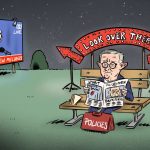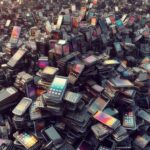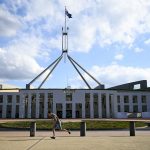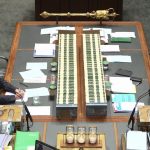Arvanitakis on Education: The power of art – reflections on the Precious Treasures exhibition
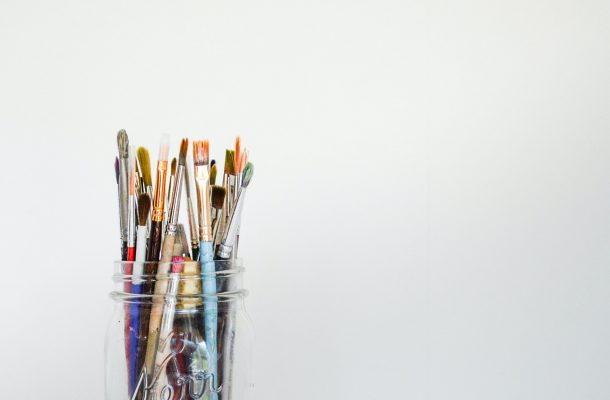
The arts have always held a unique space in societies. They have been used as tools of activism as well as propaganda. Even the most powerful regimes have feared the power of art.
One example is the Degenerate Art Exhibition (or Die Ausstellung “Entartete Kunst”) organized by Adolf Ziegler and the Nazi Party in 1937, Munich. The exhibition presented 650 works of art confiscated from German museums.
It was part of Hitler’s ‘merciless war’ on cultural disintegration, attacking ‘chatterboxes, dilettantes and art swindlers’. For Nazi Germany, degenerate art was defined as works which ‘insult German feeling or destroy or confuse natural form’.
Many of these banned works survived and have toured the world including the NSW Art Gallery as part of The Mad Square: modernity in German art 1910–37 in 2011.
Art plays other roles also. During the heightened tensions between Indonesia and Australia for example, artists across these nations came together to share their humanity despite the geopolitical standoff over East Timor.
Today, as global tensions escalate once more throughout the Asia-Pacific region, artists once again have come together to share their hopes, fears and reflections. Precious Treasures, a new exhibition curated by Guan Wei, aims to do just that.
What follows is the speech I delivered as part of opening that exhibition and reflects on the power of art in education and society.
The blank canvas
I have always been fascinated by the way artists approach the blank canvas. As a writer, I find nothing more exciting or terrifying than a blank page.
When an artist stands in front of a blank canvas, there is a moment when they are caught between worlds. A world of absolute emptiness and infinite possibility. They are about to give life to the most powerful weapon that exists: an idea.
This idea could be a mirror – a reflection on what is happening around us. Or to rekindle an idea: a moment lost in history. Or a hope or warning for the future.
German philosopher, Martin Heidegger, called moments like these ‘threshold moments’: instants when we move between two worlds. When the canvas, page, clay or any other material is altered, the world is transformed.
And the best artists in turn, transform us, and the world around them.
The blank canvas then, represents all the potential we have to offer – and the role of the artist is to transform the canvas as well as all of us.
The artist
As we meet here, the world around us is, as always, in turmoil. Great powers separated by the Pacific Ocean are walking around each other like two giants showing off their strengths and looking for the other’s weaknesses.
Politicians of all persuasions in countries around these giants vie for positions to garner favour. They use simple language couched in binary sentences.
In a few short months, we have seen collaborators turn to eye each other suspiciously. This has happened before and will happen again.
In the meantime, artists in their many forms, have always cut through these political moments and embraced the creative potential I described.
The artist today, like always, has worked to overcome political posturing and inconveniences and attempted to capture something that transcends us.
In my own collaborations, working with artists such as Chen Ping and Lee Hong, we have attempted to capture and reflect different dimensions of the human condition: what we fear, a sense of alienation and our relationship to each other and the world around us.
This lineage of interconnectedness is captured by many artists and philosophers over millennia including Wang Yangming (1472– 1529) who explained why humanity should extend love to all things:
Everything from ruler, minister, husband, wife, and friends to mountains, rivers, spiritual beings, birds, animals, and plants should be truly loved in order to realize my humanity that forms one body with them, and then my clear character will be completely manifested, and I will really form one body with Heaven, Earth, and the myriad things.
Moments and possibility
In November, the Australian National University released a report that found almost 85% of Asian Australians faced discrimination in 2020 as a result of Covid-19.
While this is happening, Diversity Arts Australia in partnership with the Asian Australian Alliance, are working with Asian creatives and artists to produce works across Sydney to respond to Covid-19 racism. The project is titled I Am Not a Virus.
Now I should say I am the patron of Diversity Arts Australia and I am proud of the work we do and have always done. But we are only one of many arts-based organisations responding to such challenges.
To take a crisis and confront it with moments of inclusion show that artists are truly transformational.
Challenges like these offer us moments to respond – to highlight why exhibitions like Precious Treasures have never been more important.
The “Precious Treasures” art exhibition was organised by the Australia-China Institute for Arts and Culture in collaboration with the Willoughby City Council as part of the Council’s Lunar New Year Festival this year.
Professor James Arvanitakis is the Executive Director of the Australian American Fulbright Commission – one of the world’s most prestigious international education and cultural exchange programs.








